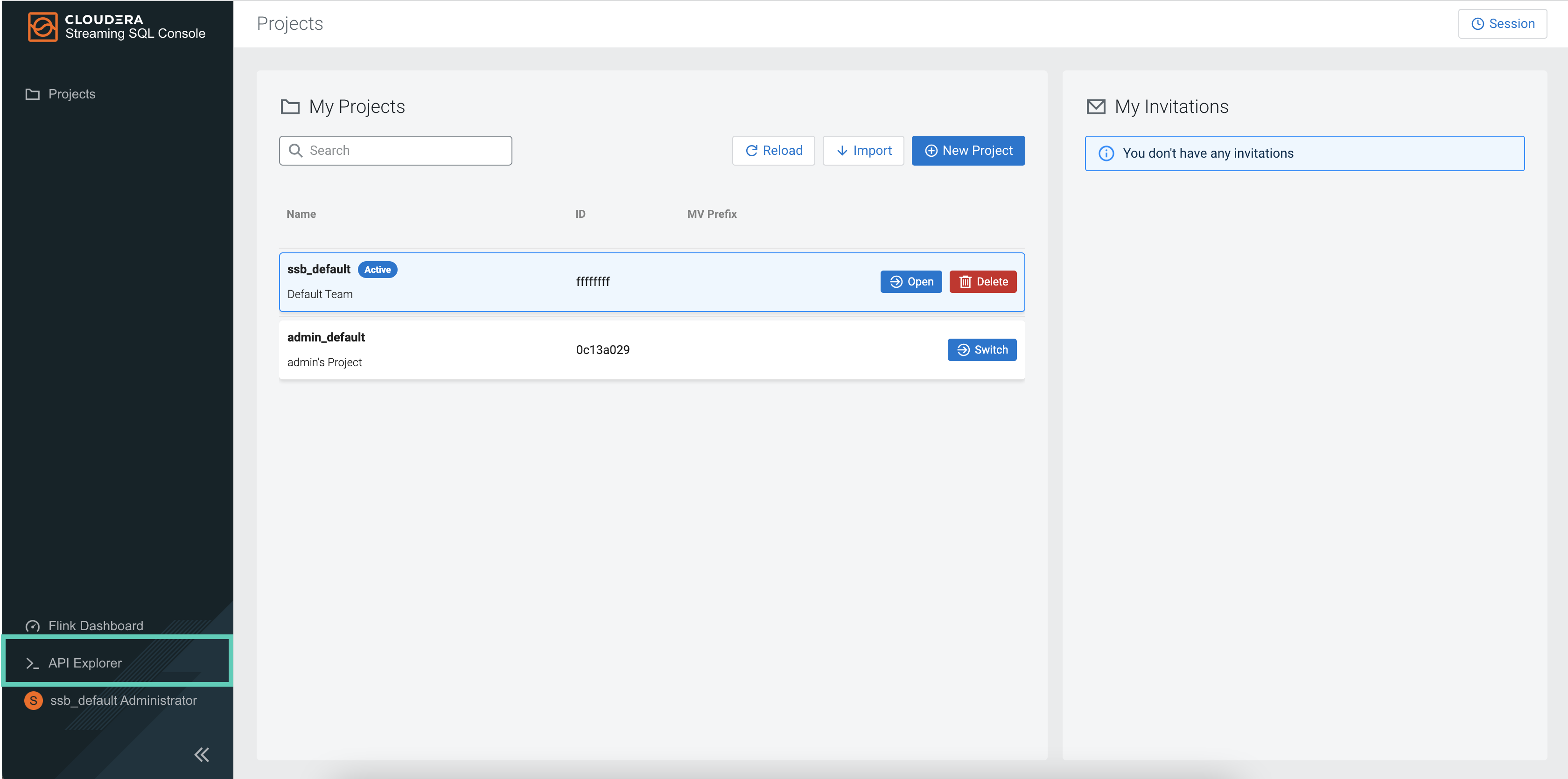Using SQL Stream Builder REST API
You can use the REST API to monitor, manage and configure the SQL Stream jobs with GET, POST and DELETE HTTP methods. You can use the SQL Stream Builder (SSB) REST API in the command line, import them to REST API Tools or by accessing the Swagger UI.
- GET to query information about the specified endpoint
- POST to create resources for the specified endpoint
- PUT to update existing resources for the specified endpoint as a whole
- PATCH to partially update existing resources for the specified endpoint
- DELETE to remove objects from the specified endpoint

You can use the SSB REST API with Command Line Interface (CLI), you can
also import the REST API swagger.json file to a REST API Tool, for example
Postman, and you also have the option to use the REST API with the Swagger User Interface
(UI).
- Heartbeat
- Admin Operations
- User Operations
- User Keytab Operations
- Data Source Operations
- Table Operations
- Project Operations
- Project Environment Operations
- Project Sync Operations
- Project Invitation Operations
- Project Permission Operations
- SQL Operations
- SSB Session Operations
- Job Operations
- Sampling Operations
- Flink Job Operations
- Flink Session Cluster Operations
- Artifact Operations
- UDF Artifact Operations
- UDF Operations
- API Key Operations
- Connector Operations
- Data Format Operations
- Diagnostic Operations
Accessing the project ID

GET /api/v2/projects call in CLI to list all
projects that the user has access to.Using REST API Tool
swagger.json file when you need to manually upload the REST
API endpoints for a
Tool.http(s)://[***CLUSTER_DOMAIN***]:[***STREAMING_SQL_ENGINE_SERVER_PORT***]/swagger/api-docs/publicUsing REST API with CLI
When using the SSB REST API with CLI Tool, you need to create the POST or GET commands with
curl, and also include the Streaming SQL Engine hostname, port and the
required operation for the endpoint. The submitted commands return the information, or
complete the process you have requested and display the status in the CLI.
The following examples show a secured and unsecured GET method to list the SQL jobs:
$ curl -H 'Username: [***YOUR_USERNAME***]' \
'https://[***CLUSTER_DOMAIN***]:[***STREAMING_SQL_ENGINE_SERVER_PORT***]/api/v1/ssb/jobs'$ kinit [***YOUR_USERNAME***]
$ curl -ik --negotiate -u: \
'https://[***CLUSTER_DOMAIN***]:[***STREAMING_SQL_ENGINE_SERVER_PORT***]/api/v1/ssb/jobs'$ curl -ik --negotiate -u [***KNOX_USERNAME***[:[***KNOX_PASSWORD***] \
'https://[***CLUSTER_DOMAIN***]:[***STREAMING_SQL_ENGINE_SERVER_PORT***]/gateway/cdp-proxy-api/ssb-sse-api/api/v1/ssb/jobs'
Using Swagger UI
You can access the Swagger UI to use the SSB REST API by adding your hostname and the Streaming SQL Engine port to the Swagger UI URL.
http(s)://[***CLUSTER_DOMAIN***]:[***STREAMING_SQL_ENGINE_SERVER_PORT***]/swagger-ui/index.html?configUrl=/swagger/api-docs/swagger-configYou can also download the swagger.json for the SSB REST API using the Swagger
UI.
